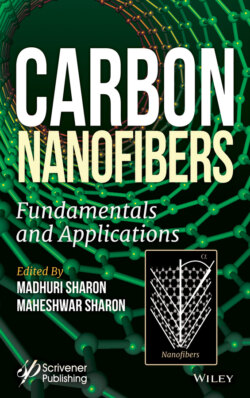Читать книгу Carbon Nanofibers - Группа авторов - Страница 24
1.2 Properties of Carbon Nanofiber and How It Differs from Carbon Nanotube
ОглавлениеIntrinsically, there is not much difference between carbon nanofiber and carbon nanotube. When a single layer of graphene sheet is rolled into a cylinder (Figure 1.5a) it takes the shape of a single-walled carbon nanotube. When a multiple number of graphene sheets separated by a distance of 0.335 nm are rolled into a cylindrical shape it takes the shape of multi-walled carbon nanotubes (Figure 1.5b). However, when broken sheets of multiple graphene sheets are rolled into a cylinder it takes the shape of carbon nanofiber (Figure 1.5c). In other words, carbon nanofibers appear as cylindrical nanostructures with graphene layers organized as packed cones, cups or plates. The surface area of CNF is much larger compared to MWCNT of the same dimension, because the former has many broken graphene sheets which are not aligned as that of MWCNT (well-defined layer, as shown in the TEM image in Figure 1.5b).
Figure 1.5 Schematic illustration of (a) how single layer of graphene folds to make a single-wall carbon nanotube; (b) how multilayers of graphene fold together to form a multi-walled carbon nanotube; and (c) sketch of how broken graphene layers fold to form a carbon nanofiber, and TEM image of CNF with broken graphene layers, and (d) TEM image of packed cones, cups.
